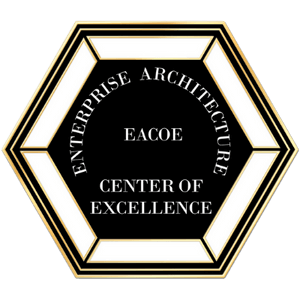Our Mission: to advance understanding and implementation of Enterprise Architecture
Overarching Goals
- Be the definitive source of Enterprise Architecture communication, research, and implementation understanding.
- Provide a universal understanding and competence forum on Enterprise Architecture, for General Management, Technologists, Academicians, and Practitioners, that have an interest in implementing Enterprise Architecture concepts.
- Advance Enterprise Architecture practices to be recognized as a profession, similar to the Engineering and Manufacturing professions.
Assumptions
The profession of Enterprise Architecture requires a source of understanding that is based on actual practitioner experience and successes.
Enterprise Architecture is fundamental for the successful participation of enterprises in the “new” world, and the base of knowledge of Enterprise Architecture that these Enterprises rely upon requires professional administration, skills verification, and continuous professional development.
Enterprise Architecture is the principle structural mechanism for:
Addressing continuing and accelerating rates of change through the use of Architecture Models
Explicitly Visualizing, Developing, Presenting, and Understanding Business Strategy
Aligning Technology and Application Strategy with Business Strategy
Providing Technology and Application Implementation Models, based on Architecture Models, for Enterprise Management and Systems Management
Reuse of Data, Processes, and Technologies
Managing the Knowledge-Base of the Enterprise
Enterprise Architecture best practices have been proven to be best developed by looking at the past “ages” (Nomadic, Agrarian, Mercantile, and Industrial), and understanding the similarities and differences. The “Information Age / Knowledge Age” can gain significant insights from these past learnings, as it matures. There is no proven “special privilege” of the Information Age / Knowledge Age that would suggest otherwise.
An understanding of Enterprise Architecture requires the following components to be considered to be complete:
A Process
A Classification, Taxonomy, and Framework
A Work Breakdown Structure and Methodology
An Enterprise Architect Maturity Model
An Organization Change Model, Process, Methodology and Work Breakdown Structure
A Set of Business Understanding Components
A Set of Technology Understanding Components
An Understanding of Architecture Models
An Understanding of Implementation Models
Components geared toward “short term value”, that can be built upon to provide “long term value”
Templates and tools to provide immediate practitioner guidance
Criteria to allow practitioners to be recognized for growing competencies, as their experience grows, based on actual Enterprise Architecture activities
